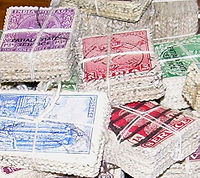Partition of a set

Have you ever played with legos? Imagine you have a pile of different colored legos. Now, you want to organize them into groups by the color. You make a group of all the red legos, another group of all the blue legos, and so on. This is kind of like a partition of the set of legos based on their color.
Similarly, in mathematics, a set can also be divided into groups based on certain criteria. For example, you can partition a set of animals into different groups based on whether they have four legs or not. This means that all animals with four legs will be in one group, and all others in another group.
A partition of a set is a way of dividing the set into non-overlapping groups or parts. No element of the set can belong to more than one group, and every element of the set must belong to at least one group. It's like putting each element into a labeled box or group, with each box containing only elements that satisfy some common condition.
Partitions can be used in various fields of mathematics, from number theory to topology. They are also useful in solving problems related to combinatorics, such as counting permutations, combinations, and partitions themselves.
So, just like how you organized your legos based on their color, mathematicians can organize sets based on certain criteria using partitions. It's a way of making sense of large groups of things by breaking them down into more manageable parts.
Similarly, in mathematics, a set can also be divided into groups based on certain criteria. For example, you can partition a set of animals into different groups based on whether they have four legs or not. This means that all animals with four legs will be in one group, and all others in another group.
A partition of a set is a way of dividing the set into non-overlapping groups or parts. No element of the set can belong to more than one group, and every element of the set must belong to at least one group. It's like putting each element into a labeled box or group, with each box containing only elements that satisfy some common condition.
Partitions can be used in various fields of mathematics, from number theory to topology. They are also useful in solving problems related to combinatorics, such as counting permutations, combinations, and partitions themselves.
So, just like how you organized your legos based on their color, mathematicians can organize sets based on certain criteria using partitions. It's a way of making sense of large groups of things by breaking them down into more manageable parts.
Related topics others have asked about:
